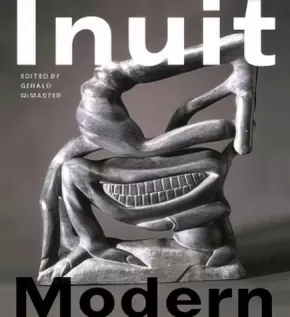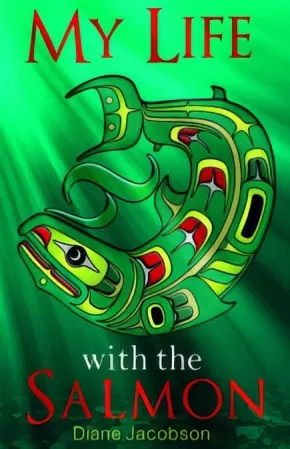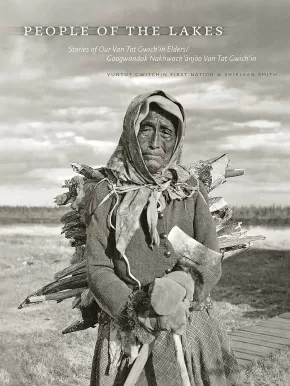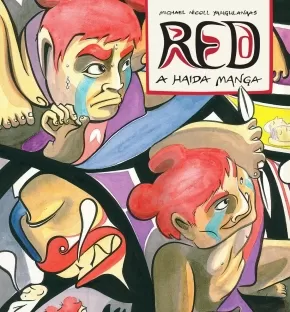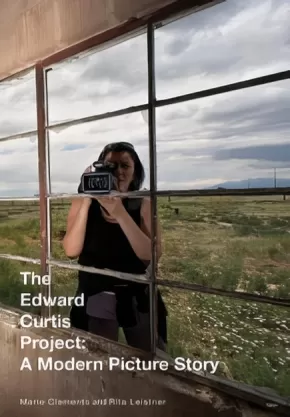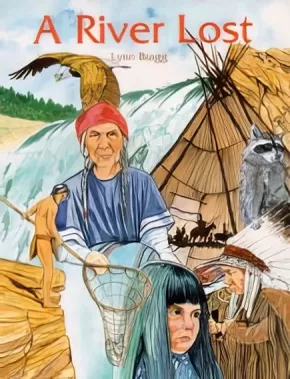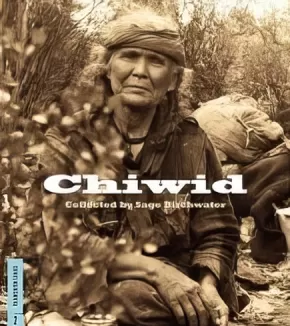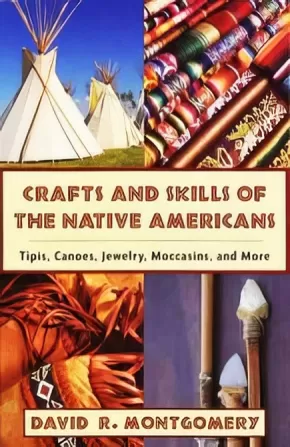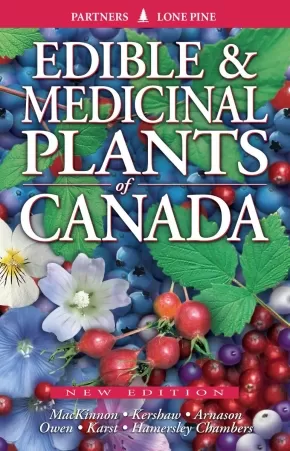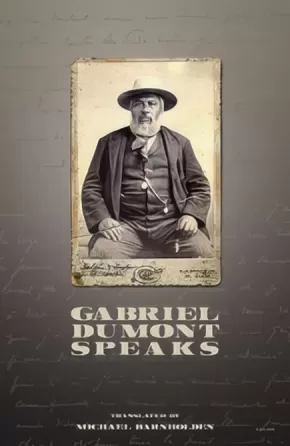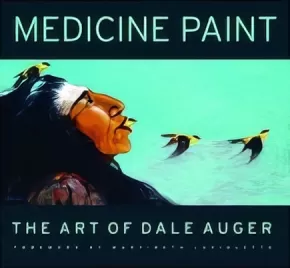
Non-Fiction
646
-
660
of
748 Results;
Sort By
Go To
of 50
Indigenous Screen Cultures in Canada (1 in Stock) - ON SALE!
$22.00 $27.95
Editors:
Format:
Paperback
Text Content Territories:
Indigenous Canadian;
ISBN / Barcode: 9780887557187
Synopsis:
Synopsis:
Indigenous media challenges the power of the state, erodes communication monopolies, and illuminates government threats to indigenous cultural, social, economic, and political sovereignty. Its effectiveness in these areas, however, is hampered by government control of broadcast frequencies, licensing, and legal limitations over content and ownership.
Indigenous Screen Cultures in Canada explores key questions surrounding the power and suppression of indigenous narrative and representation in contemporary indigenous media. Focusing primarily on the Aboriginal Peoples Television Network, the authors also examine indigenous language broadcasting in radio, television, and film; Aboriginal journalism practices; audience creation within and beyond indigenous communities; the roles of program scheduling and content acquisition policies in the decolonization process; the roles of digital video technologies and co-production agreements in indigenous film making; and the emergence of Aboriginal cyber-communities.
Additional Information
200 pages | 6.00" x 9.00"
Inuit Modern: Masterworks from the Samuel and Esther Sarick Collection
$24.99
Artists:
Editors:
Format:
Paperback
Text Content Territories:
Indigenous Canadian; Inuit;
Grade Levels: 12; University/College;
ISBN / Barcode: 9781553657781
Synopsis:
Synopsis:
A gorgeous retrospective on the transformation of Inuit art in the 20th century, mirroring the vast and poignant cultural changes in the North.
In response to a rapidly changing Arctic environment, Inuit have had to cope with the transition from a traditional lifestyle to the disturbing realities of globalization and climate change. Inuit art in the latter half of the 20th century reflects the reciprocal stimulus of contact with Euro-Canadians and embodies the evolution of a modern Inuit aesthetic that springs from an ancient cultural context, creating an exciting new hybridized art form. Inuit Modern: Art from the Samuel and Esther Sarick Collection situates modern Inuit art within a larger framework that reinterprets the Canadian Arctic.
Essays by leading Canadian scholars in the field including Ingo Hessel, Robert McGhee, Christine Laloude, Heather Igloliorte, Dorothy Eber and Bernadette Driscoll Engelstad examine the social, political and cultural transformation through the dynamic lens of colonial influence and agency. Inuit Modern also features interviews with David Ruben Piqtoukun and Zacharias Kunuk.
Reviews
"The work of Inuit artists has continually evolved in response to the industrialized, bureaucratic culture encroaching from the south. Inuit Modern, an opulent new coffee-table book, displays the astonishing results. The 175 pieces beautifully reproduced here span the last century." — Georgia Straight
"This book is full of treasures from one of the world's most comprehensive collections of Inuit art. With more than 175 works by Inuit artists, the reader is taken on a journey of the Inuit aesthetic as it evolves from its from traditional roots to a more contemporary and globalized art form." — Globe & Mail Top 100 for 2010
Additional Information
256 pages | 10.00" x 11.10"
My Life with the Salmon (2 in stock, Out of Print)
$18.95
Format:
Paperback
Text Content Territories:
Indigenous Canadian; First Nations; Kwakwaka'wakw (Kwakiutl); Namgis;
ISBN / Barcode: 9781894778886
Synopsis:
Synopsis:
Diane “Honey” Jacobson’s latest book is an important comment about First Nations efforts to save the salmon and her personal youthful journey to find meaning and a sense of place in life. Like the style in her first book My Life in a Kwagu’l Big House, Diane’s style in My Life with the Salmon is full of action, amazing adventures and fascinating connections between land, water and people. In My Life with the Salmon, we follow “Honey” through sometimes hilarious and sometimes difficult periods but we always learn a life lesson.
Awards
- 2012 Winner of the Independent Publisher Book Awards
Additional Information
176 pages | 5.50" x 8.47"
People of the Lakes: Stories of Our Van Tat Gwich'in Elders / Googwandak Nakhwach'anjoo Van Tat Gwich'in
$44.99
Format:
Paperback
Text Content Territories:
Indigenous Canadian; First Nations; Dene; Dinjii Zhuh (Gwich'in);
ISBN / Barcode: 9780888645050
Synopsis:
Synopsis:
Many people have a mental picture of the Canadian north that juxtaposes beauty with harshness. For the Van Tat Gwich'in, the northern Yukon is home, with a living history passed on from elders to youth. This book consists of oral accounts that the Elders have been recording for 50 years, representing more than 150 years of their history, all meticulously translated from Gwich'in. Yet this is more than a gathering of history; collaborator Shirleen Smith provides context for the stories, whether they are focused on an individual or international politics. Anthropologists, folklorists, ethnohistorians, political scientists, economists, members of First Nations, and readers interested in Canada's northernmost regions will find much to fascinate them.
Additional Information
|
Red: A Haida Manga
$22.95
Artists:
Format:
Paperback
Text Content Territories:
Indigenous Canadian; First Nations; Haida;
ISBN / Barcode: 9781771620222
Synopsis:
Synopsis:
Referencing a classic Haida oral narrative, this stunning full-colour graphic novel documents the powerful story of Red, a leader so blinded by revenge that he leads his community to the brink of war and destruction.
Set in the islands off the northwest coast of B.C., it tells the tale of orphan Red and his sister, Jaada. When raiders attack their village, Red, still a boy, escapes dramatically. But Jaada is whisked away. The loss of Jaada breeds a seething anger, and Red sets out to find his sister and exact revenge on her captors.
Red blends traditional Haida imagery into a Japanese manga-styled story. Tragic and timeless, it is reminiscent of such classic stories as Oedipus Rex, Macbeth and King Lear.
This innovation in contemporary storytelling consists of 108 pages of hand-painted illustrations. When arranged in a specific order, the panels of the narrative create a Haida formline image four metres long. The sequence for this complex design is displayed on the inside jacket.
Educator & Series Information
Haida manga is a contemporary style of Haida comics and print cartoons that explores the elements of both traditional North Pacific Indigenous arts and narrative, while also adapting contemporary techniques of artistic design from the western portion of the North Pacific, namely the Japanese manga from which its name derives.
This book is available in French: Red: Un manga haïda
Additional Information
120 pages | 8.00" x 8.75"
The Edward Curtis Project: A Modern Picture Story
$29.95
Format:
Paperback
Text Content Territories:
Indigenous Canadian;
ISBN / Barcode: 9780889226425
Synopsis:
Synopsis:
A profoundly moving new drama by Marie Clements, combined with a spectacular contemporary photo exhibit by Rita Leistner.
Edward Curtis saw his job as that of creating a photographic record of “the vanishing race of the North American Indian.” His work therefore became as much a projection of colonial attitudes upon aboriginal peoples as it was an authentic record of their lives.
The Edward Curtis Project began when the Presentation House Theatre commissioned Marie Clements to write a play that would stage the issues raised by Curtis’ monumental but controversial achievement—to dramatize not only the creation of his twenty-volume photographic and ethnographic epic and the enormous commitment, unwavering vision, sacrifice, poverty and ultimate disappointment it represented for the photographer, but also the devastating legacy that his often misrepresentative and imposed vision had on the lives of the people he touched.
Upon receiving the commission, Marie Clements immediately asked photojournalist Rita Leistner to create a parallel photographic investigation of Curtis’ work—to question the practice of documentary photography with the very medium under scrutiny. After two years of retracing Curtis’ footsteps, travelling to First Nations communities throughout North America, Clements finally felt that between them: “We were making our own pictures out of our own beliefs and they were adding up. We were inside the lies and beauty of history, of gender and class, we were making a case for the future.”
This collaborative work of two artists, to take Curtis’ photographs to heart and to see who and what might live inside them today, resulted in a profoundly moving new drama by Marie Clements, and a spectacular contemporary photo exhibit by Rita Leistner. Published together here, they illustrate the trauma that the notion of a “vanishing race” has inflicted on an entire people, and celebrate the triumph of a future in which North American First Nations communities “are everywhere and it is beautiful.”
The Zero-Mile Diet: A Year-Round Guide to Growing Organic Food
$32.95
Format:
Paperback
ISBN / Barcode: 9781550174816
Synopsis:
Synopsis:
This definitive month-by-month guide brings gardeners into the delicious world of edible landscaping and helps take a load off the planet as we achieve greater food security. Full of illustrative colour photos and step-by-step instructions, The Zero-Mile Diet shares wisdom gleaned from 30 years of food growing and seed saving with comprehensive advice on:
• Growing organic food year-round
• The small fruit orchard and backyard berries
• Superb yet simple seasonal recipes
• Preserving your harvest
• Seed saving and plant propagation
• Dirt-cheap ways to nourish your soil
• Backyard poultry—it’s less time-consuming than you
think
• Growing vegetables in the easiest way possible
• A–z guide to growing the best vegetables and herbs
Put organic home-grown fruits and vegetables on your table throughout the year, using the time-saving, economical and sustainable methods of gardening outlined in The Zero-Mile Diet. This book is about REAL food and how eating it will change our lives for the better.
Tidepool Twitcher
$8.95
Format:
Pamphlet
ISBN / Barcode: 9780986666407
Synopsis:
Synopsis:
At first glance, the ocean shoreline appears as a great expanse of beach, water and sky. Look closer – as the water recedes to low tide, an amazing world of fantastical creatures awaits your discovery. Tidepools are home to an extraordinary diversity of life arising from the need to survive this ever-changing and sometimes harsh environment. Let the Tidepool Twitcher be your guide to exploration and discover of the animals and seaweeds of the Pacific Northwest intertidal zone.
The Tidepool Twitcher is perfect for any beachcomber and includes full colour identification photos of crabs, barnacles, mollusks, chitons, nudibranchs, limpets, kelp, seaweeds, sea stars, urchins, sand dollars and cucumbers, anemones, sponge as well as info on tides and tidepool ettiquette.
A Field Guide to Seashells and Shellfish of the Pacific Northwest
$7.95
Format:
Pamphlet
Reading Level: N/A
ISBN / Barcode: 9781550174175
Synopsis:
Synopsis:
There are few more enjoyable ways to spend a relaxing afternoon than at the seashore collecting ornate seashells. But there is no need to fly away to some exotic tropical locale to begin the fun. If you are in the Pacific Northwest, you will find local beaches as rich in fascinating treasures as any place on earth--or at least you will once you have this handy eight-fold guide to show you where to look and how to identify what you find. Those whose interest in shellfish is mainly gastronomic will also find this waterproof guide an essential tool.
Additional Information
2 pages | 4.54" x 8.90" | 8 fold laminated pamphlet | 2 Pages
A River Lost
$11.95
Artists:
Format:
Paperback
Text Content Territories:
Indigenous American; Native American; Sinixt (Arrow Lakes);
ISBN / Barcode: 9780888393838
Synopsis:
Synopsis:
A River Lost is the familiar story of an ancient culture infringed upon and altered forever by modern technology. It is the story of how the construction of the Grand Coulee Dam led to the destruction of a way of life for members of the Arrow Lakes Tribe. Sinee mat and her great-grandmother Toopa tell the engaging story of life on the Columbia River, before and after the dam.
Additional Information
32 pages | 8.50" x 11.00"
Chiwid
$19.00
Format:
Paperback
Text Content Territories:
Indigenous Canadian; First Nations; Dene; Tsilhqot'in (Chilcotin);
ISBN / Barcode: 9780921586395
Synopsis:
Synopsis:
Chiwid was a Tsilhqot'in woman, said to have shamanistic powers, who spent most of her adult life "living out" in the hills and forests around Williams Lake, BC. Chiwid is the story of this remarkable woman told in the vibrant voices of Chilcotin oldtimers, both native and non-native.
Reviews
"Chiwid was a Chilcotin woman who lived outside, self-sufficiently for most of her life and moving camps with the seasons. Chiwid is a collection of oral histories about the woman, her family and what life was like in the Chilcotin area of British Columbia in the early to mid-1900s." - The Association of Book Publishers of BC. BC Books for BC Schools. 2009-2010.
Additional Information
128 pages | 8.00" x 9.00"
Authenticity Note: This book's author is not Indigenous; however, the book has the Authentic Indigenous Text label because it contains stories collected by the author from Indigenous and non-Indigenous peoples. It is up to readers to determine if this book will work as an authentic text for their purposes.
Crafts and Skills of the Native Americans: Tipis, Canoes, Jewelry, Moccasins, and More (3 in Stock) - ON SALE!
$16.00 $19.95
Format:
Paperback
Text Content Territories:
Indigenous American; Native American;
Reading Level: N/A
ISBN / Barcode: 9781602396760
Synopsis:
Synopsis:
Crafts and Skills of Native Americans is a fascinating, practical guide to the skills that have made Native Americans famous worldwide as artisans and craftsmen. Readers can replicate traditional Native American living by trying a hand at brain tanning, identifying animal tracks, or constructing a horse saddle. Readers can even make distinctive Native American beaded jewelry, a variety of moccasins, headdresses, and gourd rattles. Native American style is unique and popular, especially among young people, historians, and those with a special interest in the American West.
Additional Information
240 pages | 5.50" x 8.50"
Edible and Medicinal Plants of Canada
$32.95
Format:
Paperback
Text Content Territories:
Indigenous;
ISBN / Barcode: 9781772130027
Synopsis:
Synopsis:
Canada is home to a vast diversity of plants that have helped nourish and heal our people for thousands of years. Find out about:
* First Nations uses of plant species
* Gathering and preparing wild plants for a variety of uses
* Historic European uses of plant species
* Plants for everything from clothing to shelter
* The fundamentals of survival – food and medicines
* Clear descriptions of the plants and where to find them
* Warnings about plant allergies, poisons and digestive upsets
* A special section identifying poisonous plants and species that are similar
* More than 530 colour photographs and 125 illustrations.
Additional Information
448 pages | 5.50" x 8.50" | Paperback
Gabriel Dumont Speaks: Revised 2nd Edition
$16.95
Format:
Paperback
Text Content Territories:
Indigenous Canadian; Métis;
ISBN / Barcode: 9780889226258
Synopsis:
Synopsis:
Gabriel Dumont's memoirs present a rare view of Métis history as told by one of their key heros.
In 1903, eighteen years after leading the Métis Army against the Northwest Expeditionary Force and the Northwest Mounted Police at Fish Creek, Duck Lake and Batoche, Louis Riel’s Adjutant General Gabriel Dumont dictated his memoirs to a group of friends, one of whom is thought to have written Dumont’s stories out in longhand during that epic meeting. This manuscript languished unseen and unpublished in the Manitoba Provincial Archives as part of L’Union nationale métisse de Saint-Joseph collection until its discovery there by Michael Barnholden in 1971. Now re-translated into English, it preserves the record of an unrepeatable oral recital, offering us a rare opportunity to view one of the central events in the history of the Métis in a new context: as perceived by one of their key heroes.
Like Riel, Dumont put the interest of his people ahead of his own. Although he could neither read nor write, he was an eloquent speaker, sought after to defend Métis rights both in Canada and the United States throughout the 1880s and 1890s. Known to have spoken Blackfoot, Sioux, Crow, Cree, French and English, Dumont dictated his memoir in “incipient Michif,” thought to be his first language: using Cree syntax and some verbs, with a vocabulary that was primarily French.
Dumont’s first-person account of the details of his early life, leading up to the events variously referred to as the Riel Rebellion, the Northwest Rebellion or the War of 1885, provide a third reading of the “Rebellion” from the point of view of its military leader, as well as many personal, cultural and historical revelations worthy of examination. In addition, Dumont’s sheer strength of narrative carries these decisive events with a conviction, drama and suspense that only the tradition of oral history can deliver.
Medicine Paint: The Art of Dale Auger
$59.95
Format:
Hardcover
Text Content Territories:
Indigenous Canadian; First Nations; Cree (Nehiyawak);
Grade Levels: University/College;
ISBN / Barcode: 9781894974752
Synopsis:
Synopsis:
One of Canada's most evocative modern painters, Cree artist Dale Auger was a gifted interpreter of First Nations culture, using the cross-cultural medium of art to portray scenes from the everyday to the sacred and dissemble stereotypes about Indigenous peoples. Medicine Paint is a collection of Auger's best work, reproduced in glorious full colour and reflecting the evolution of the artist's distinctive style. Including a revealing look back at his life and professional development, the book is a stunning tribute to the master Aboriginal artist.
Auger uses bold, bright colours in his oil paintings to explore the intricate links between spirituality and the natural laws of the land. Birds, beasts and human forms are carried from the dreamworld onto canvas, their spirits channeled through his paintbrush and presented in brilliant yellows, mystic blues, vibrant reds and swirls of black. Infusing his subjects with energy, life and colour, Dale Auger masterfully presents scenes that are powerful, spiritual and inspiring. A bald eagle is majestic in flight against a bright blue sky. An elder makes a solemn offering to the Sky Being. Horses dance playfully in the frame for a sweat lodge. A warrior draws his bow and points it skyward.
Sort By
Go To
of 50



